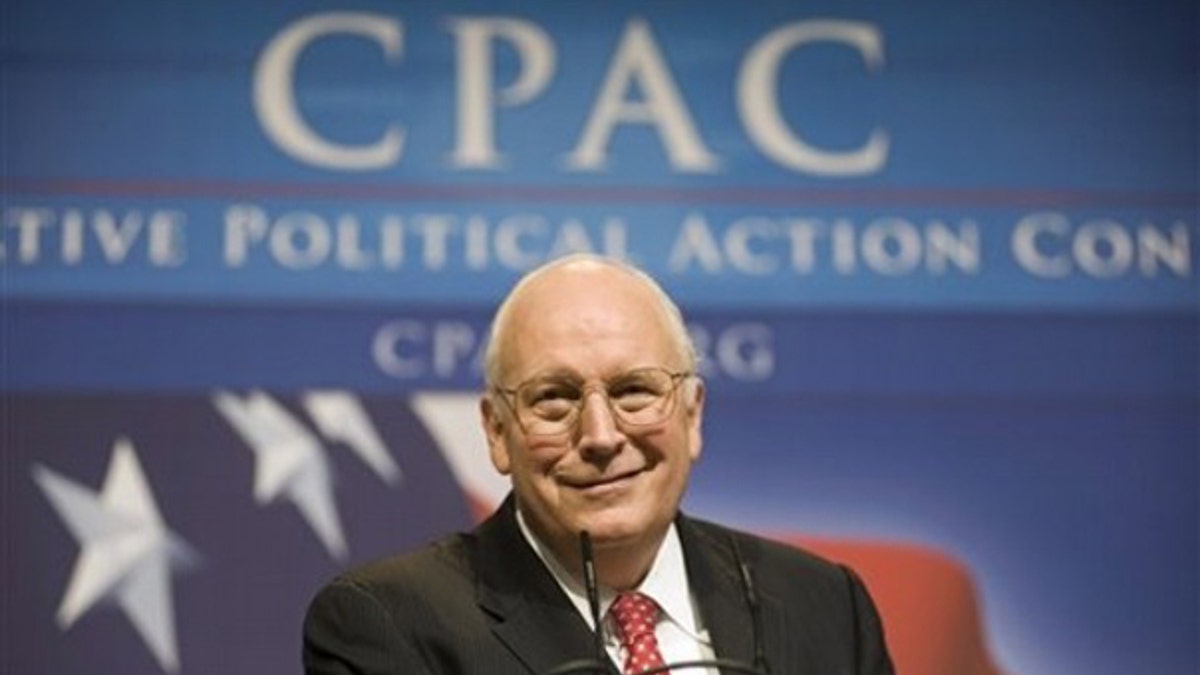
Former Vice President Dick Cheney addresses the Conservative Political Action Conference (CPAC), in Washington, Thursday, Feb. 18, 2010. (AP Photo/Cliff Owen) (AP)
Former Vice President Dick Cheney has been showing his newly slender physique around Washington, D.C. a lot more since Christmas, and it now appears he’s back in the spotlight from his self-appointed leave of absence from politics. But a long history of heart attacks has left many wondering just how long he will be back before needing another major procedure.
In July of last year, Cheney had a partially artificial heart, know as a left ventricular assist device (LVAD), implanted in his chest in order to help push blood through his body continuously, mimicking a fully functioning heart. It is a risky procedure, and normally done as a last resort to keep the patient functioning close to normal until they can receive a heart transplant.
Although the device leaves Cheney without a pulse, it is designed to allow a patient in considerably good health otherwise, to do everything from driving to even light exercise. Patients need to take an anticoagulant to prevent blood clots, and have regular blood tests.
The type of artificial heart Cheney received last summer is unknown, but Dr. Kathy Magliato, a cardiothoracic surgeon and director of women’s cardiac services at Saint John’s Health Center in Santa Monica, Calif., and author of “HEART MATTERS: A Memoir of a Female Heart Surgeon” told FoxNews.com that LVADs can be both temporary and permanent.
“They are subject to mechanical failure and can wear like a car. The device may need to be changed out. Some need a new one in two years, others in five years. He could have it for several years,” she said. “If it shows signs of wear, it can be replaced with another device indefinitely until the patient dies from some other cause.”
Magliato, who has specialty training in heart transplantation, lung transplantation and ventricular assist devices at the University of Pittsburgh in Pennsylvania, said there are three reasons patients like Cheney receive an assist device.
The first is to stabilize them while they wait on the transplant list, which is referred to as a “bridge to transplant.” Another possibility is to keep the LVAD in – to live with it indefinitely. And lastly, the heart may have the ability to stabilize and recover with an LVAD, which is then removed and the patient is able to live with their native heart.
At 69 years old, many would assume that Cheney’s chances to qualify for a heart transplant are growing slim, but Magliato said that is simply not the case.
“His age may be 69 but we talk about physiological age. There are transplant centers who will definitely consider a 69 year old,” she said. “There is no national cut off age for heart transplants; it depends on the transplant center. Some have abolished a cut off age and will consider every patient on a case by case basis.”
Magliato, who has not treated Cheney, said his risks are similar to the basic risks of any patient, including bleeding, stroke, infection, rejection, and organ dysfunction, when other organs have problems after the transplant depending on various elements.
According to data from the United Network for Organ Sharing, the survival rate for a heart transplant on a patient over the age of 65 after one year is 84 percent. Magliato stressed that the prognosis for these patients is quite good considering their chances of survival without the transplant.
“In order to even get on transplant list, you have to be facing imminent death in the next six months,” Magliato said.
The latest heart transplant list data shows 3,169 people waiting in U.S. to receive a transplant. Magliato said on average doctors in the U.S. perform 2,200 heart transplants a year, creating an obvious supply and demand issue.
She also emphasized that the heart transplant list is determined by the status and severity of disease in a patient, and Cheney’s position will not play a role.
“You don’t get on the list by buying your way on. People think somehow wealth plays a role, and that is absolutely not true, nor does socioeconomic status,” she said. “The bottom line is the sicker you are, the higher on the list you are.”
About 5 million Americans have congestive heart failure. Cheney has dealt with heart problems for much of his adult life, suffering five heart attacks since age 37.
